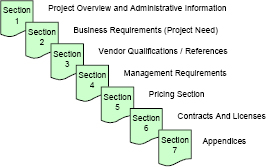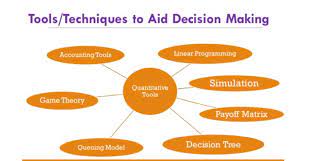Collaborative Decision Making Tools: Enhancing Teamwork and Efficiency
In today’s fast-paced and interconnected world, decision making is rarely a solo endeavor. More often than not, decisions are made in teams or groups, where multiple perspectives and expertise come into play. Collaborative decision making has become an essential aspect of many organizations, as it allows for diverse ideas to be shared and considered, ultimately leading to better outcomes.
To facilitate effective collaborative decision making, various tools and technologies have emerged. These tools aim to streamline the process, enhance communication, and promote the sharing of ideas among team members. Let’s explore some of the most popular collaborative decision making tools that are transforming teamwork and efficiency in organizations.
Decision Support Systems (DSS):
Decision Support Systems are computer-based tools that assist teams in analyzing complex problems and making informed decisions. These systems integrate data from various sources, provide visualizations, and offer analytical models to support the decision-making process. DSS enables teams to evaluate different scenarios, assess risks, and arrive at well-informed choices.
Group Decision Support Systems (GDSS):
GDSS takes collaboration a step further by providing a platform for team members to interact simultaneously during the decision-making process. These systems allow participants to submit their ideas anonymously, ensuring equal participation without biases or hierarchical influences. GDSS also enables real-time discussions through chat features or video conferencing, fostering open communication among team members.
Brainstorming Software:
Brainstorming is a powerful technique for generating innovative ideas within a group setting. Brainstorming software platforms facilitate virtual brainstorming sessions by allowing participants to contribute ideas simultaneously from different locations. These tools often feature visual collaboration boards where team members can post their thoughts in real-time, promoting creativity and engagement.
Project Management Tools:
While project management tools primarily focus on organizing tasks and timelines, they also play a significant role in collaborative decision making. These platforms provide features such as shared calendars, task assignment, and document sharing, enabling teams to collaborate seamlessly on decision-making processes within the context of project workflows.
Online Surveys and Polling Tools:
When it comes to gathering opinions and preferences from team members, online survey tools offer a convenient solution. These tools allow for the creation of customized surveys that can be distributed digitally to collect feedback from team members. Polling tools, on the other hand, facilitate quick and anonymous voting on specific options or choices, making them ideal for reaching consensus in a time-efficient manner.
Virtual Meeting Platforms:
In today’s remote work environment, virtual meeting platforms have become indispensable for collaborative decision making. These platforms offer features such as video conferencing, screen sharing, and chat functionalities that enable teams to communicate effectively regardless of their physical location. Virtual meetings provide a space for discussions, deliberations, and ultimately reaching decisions as a group.
Collaborative decision making tools have revolutionized the way teams work together to make critical choices. By leveraging these technologies, organizations can enhance teamwork, improve decision quality, and increase overall efficiency. Whether it’s through advanced analytical models or simple yet effective brainstorming platforms, these tools empower teams to harness the collective intelligence of their members and achieve successful outcomes in an increasingly interconnected world.
Frequently Asked Questions: Collaborative Decision-Making Tools
- How businesses use collaboration systems for decision-making?
- What tools could be used for decision-making?
- What is collaboration decision-making?
- How do you do collaborative decision making?
How businesses use collaboration systems for decision-making?
Businesses utilize collaboration systems for decision-making in various ways to enhance efficiency, foster teamwork, and improve outcomes. Here are some common ways businesses leverage collaboration systems:
- Enhanced Communication: Collaboration systems provide a platform for team members to communicate and share information seamlessly. Through features like chat, messaging, and document sharing, businesses can ensure that relevant data and insights are readily available to all stakeholders involved in the decision-making process.
- Real-Time Collaboration: Collaboration systems enable real-time collaboration among team members, regardless of their physical location. This is particularly beneficial for businesses with remote or distributed teams. By facilitating virtual meetings, video conferencing, and shared workspaces, collaboration systems allow for simultaneous brainstorming, idea sharing, and decision-making discussions.
- Access to Information: Collaboration systems often integrate with other business tools such as project management software or data analytics platforms. This integration allows teams to access relevant information and data in one centralized location. Having easy access to accurate and up-to-date information enables informed decision making based on facts rather than assumptions.
- Streamlined Workflows: Collaboration systems help streamline decision-making workflows by providing a structured framework for the process. These systems often offer features like task assignment, progress tracking, and deadline management that keep the decision-making process organized and transparent.
- Diverse Perspectives: Collaboration systems encourage participation from team members with diverse backgrounds and expertise. By providing equal opportunities for contribution through anonymous idea submission or voting mechanisms, businesses can ensure that decisions are not influenced by hierarchical biases or dominant personalities.
- Data Visualization and Analysis: Some collaboration systems integrate analytical tools that assist in data visualization and analysis during the decision-making process. These tools help teams interpret complex data sets more effectively, identify patterns or trends, and make data-driven decisions.
- Decision Documentation: Collaboration systems often include features for documenting decisions made during the process. This documentation ensures accountability and transparency within the organization while also serving as a reference for future decision-making or evaluation purposes.
- Feedback and Iteration: Collaboration systems allow teams to gather feedback from stakeholders throughout the decision-making process. This feedback loop enables continuous improvement and iteration, ensuring that decisions are refined based on input from relevant parties.
By leveraging collaboration systems, businesses can harness the collective intelligence of their teams, encourage participation, and make well-informed decisions. These systems facilitate effective communication, streamline workflows, and provide access to information necessary for successful decision-making in today’s dynamic business environment.
What tools could be used for decision-making?
There are various tools that can be used for decision-making, depending on the specific context and requirements. Here are some commonly employed tools:
- Decision Matrix: A decision matrix is a systematic approach that involves creating a table with criteria and alternatives, assigning weights to each criterion, and evaluating alternatives based on those criteria. It helps in comparing and ranking different options objectively.
- SWOT Analysis: SWOT (Strengths, Weaknesses, Opportunities, Threats) analysis is a framework used to assess the internal strengths and weaknesses of a situation or organization, as well as the external opportunities and threats it faces. This tool helps in identifying key factors that can influence decision making.
- Pareto Analysis: Pareto analysis, also known as the 80/20 rule, helps prioritize decisions by identifying the most significant factors or causes that contribute to a problem or desired outcome. It enables focusing efforts on the vital few rather than the trivial many.
- Decision Trees: Decision trees are graphical models that map out different possible decisions and their potential outcomes. They help visualize complex decision scenarios by breaking them down into smaller branches of choices and consequences.
- Cost-Benefit Analysis: Cost-benefit analysis is an economic tool used to evaluate decisions by comparing the costs associated with an option against its expected benefits or returns. This method quantifies both monetary and non-monetary factors to determine the overall value of a decision.
- Six Thinking Hats: Developed by Edward de Bono, this technique involves assigning different “hats” to team members during discussions. Each hat represents a different perspective (e.g., logical thinking, creativity, emotions) which helps in exploring various aspects of a decision before reaching consensus.
- Force Field Analysis: Force field analysis examines the driving forces (factors supporting change) and restraining forces (factors hindering change) related to a decision or problem. By visualizing these forces, teams can identify strategies to strengthen the driving forces and mitigate the restraining forces.
- Decision Support Systems (DSS): Decision support systems are computer-based tools that provide analytical models, data integration, and visualization capabilities to aid decision making. They assist in analyzing complex problems, evaluating alternatives, and simulating scenarios.
- Nominal Group Technique: The nominal group technique is a structured approach that involves generating ideas individually, sharing them within a group, and then collectively evaluating and prioritizing those ideas. This method ensures equal participation from all team members and avoids dominant opinions.
- Mind Mapping: Mind mapping is a visual tool that helps organize thoughts and ideas related to a decision or problem. It starts with a central concept or question and branches out into sub-topics or considerations, facilitating brainstorming and exploration of different angles.
Remember, the choice of tool depends on the nature of the decision, the available resources, and the preferences of the decision-making team. It’s often beneficial to combine multiple tools or adapt them to suit specific circumstances for optimal results.
What is collaboration decision-making?
Collaborative decision making is a process in which multiple individuals or groups work together to reach a consensus or make a collective decision. It involves active participation, open communication, and the sharing of ideas, knowledge, and perspectives among team members. Rather than relying on a single decision maker, collaborative decision making encourages the involvement of all stakeholders who have a vested interest in the outcome.
In collaborative decision making, individuals bring their unique expertise, experiences, and viewpoints to the table. This diversity of perspectives can lead to more comprehensive problem-solving and innovative solutions. The process often involves brainstorming sessions, discussions, debates, and information sharing to ensure that all relevant factors are considered before arriving at a final decision.
The goal of collaborative decision making is not only to make better decisions but also to foster trust, ownership, and commitment among team members. By involving everyone in the decision-making process, it promotes transparency and inclusivity within an organization or group.
Collaborative decision making can occur within various contexts such as business teams, community organizations, government bodies, or any situation where multiple stakeholders need to come together to address complex problems or make important choices. It emphasizes cooperation rather than competition and recognizes that collective wisdom often leads to more successful outcomes than relying solely on individual judgment.
Overall, collaborative decision making harnesses the power of teamwork and diverse perspectives to achieve consensus-based decisions that are accepted and supported by all involved parties. It promotes shared responsibility and fosters an environment where everyone feels heard and valued throughout the decision-making process.
How do you do collaborative decision making?
Collaborative decision making involves a group of individuals working together to reach a consensus or make a collective choice. Here are some steps to facilitate effective collaborative decision making:
- Define the Decision-Making Objective: Clearly articulate the purpose and desired outcome of the decision. This helps align the team and provides a common goal to work towards.
- Assemble a Diverse Team: Bring together individuals with diverse backgrounds, perspectives, and expertise relevant to the decision at hand. This diversity fosters creativity, encourages different viewpoints, and leads to more well-rounded decisions.
- Establish Clear Roles and Responsibilities: Define roles within the team, such as a facilitator to guide the process, a note-taker to document discussions, and participants who actively contribute their ideas and opinions. Clearly communicating these roles ensures everyone understands their responsibilities.
- Gather Relevant Information: Collect all necessary information related to the decision-making process. This may involve conducting research, analyzing data, seeking expert opinions, or consulting external sources. Having accurate and comprehensive information is crucial for informed decision making.
- Encourage Open Communication: Create an environment where every team member feels comfortable expressing their thoughts and ideas without fear of judgment or reprisal. Encourage active listening, respect for differing opinions, and constructive feedback.
- Utilize Collaborative Decision Making Tools: Leverage various tools mentioned earlier in this article such as decision support systems (DSS), group decision support systems (GDSS), brainstorming software, project management tools, online surveys/polling tools, or virtual meeting platforms. These tools facilitate communication, idea sharing, data analysis, and help streamline the decision-making process.
- Brainstorm Ideas: Conduct brainstorming sessions where team members freely generate ideas related to the decision at hand. Encourage creativity and avoid immediate evaluation or criticism during this phase.
- Evaluate Options: Once ideas have been generated, evaluate each option based on predetermined criteria or factors relevant to the decision. This may involve analyzing pros and cons, assessing risks, considering feasibility, or using decision-making models.
- Facilitate Discussion and Debate: Engage in thoughtful discussions and debates around the options under consideration. Encourage team members to challenge assumptions, ask questions, provide supporting evidence, and explore potential consequences.
- Reach Consensus or Make a Decision: Aim to reach a consensus where all team members agree on a course of action. If consensus is not possible, consider alternative decision-making methods such as voting or deferring to an appointed authority (if applicable). Whatever method is chosen, ensure that the final decision reflects the collective input of the team.
- Implement and Evaluate: Once a decision has been made, create an action plan outlining the steps needed for implementation. Monitor progress, evaluate outcomes against expected results, and make adjustments as necessary.
Remember that collaborative decision making requires effective communication, active participation from all team members, and a willingness to consider diverse perspectives. By following these steps and utilizing appropriate tools, collaborative decision making can lead to more informed choices and increased buy-in from the entire team.




